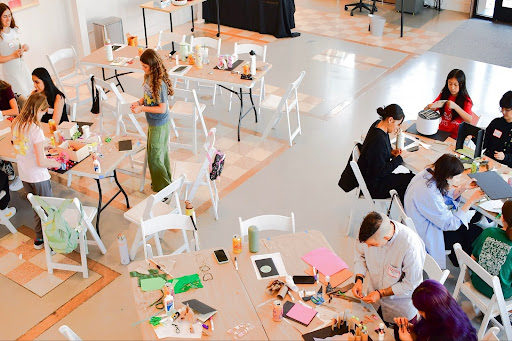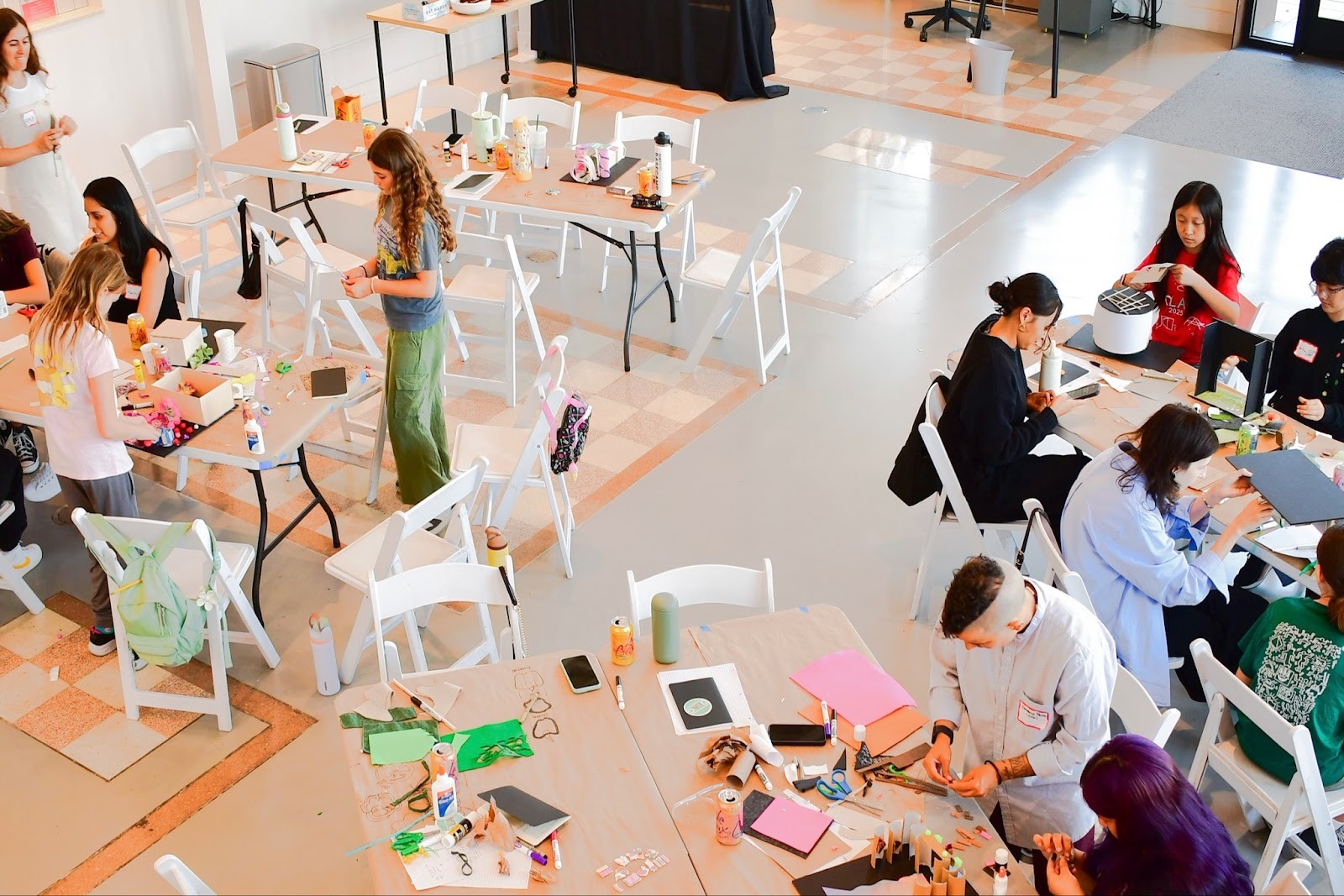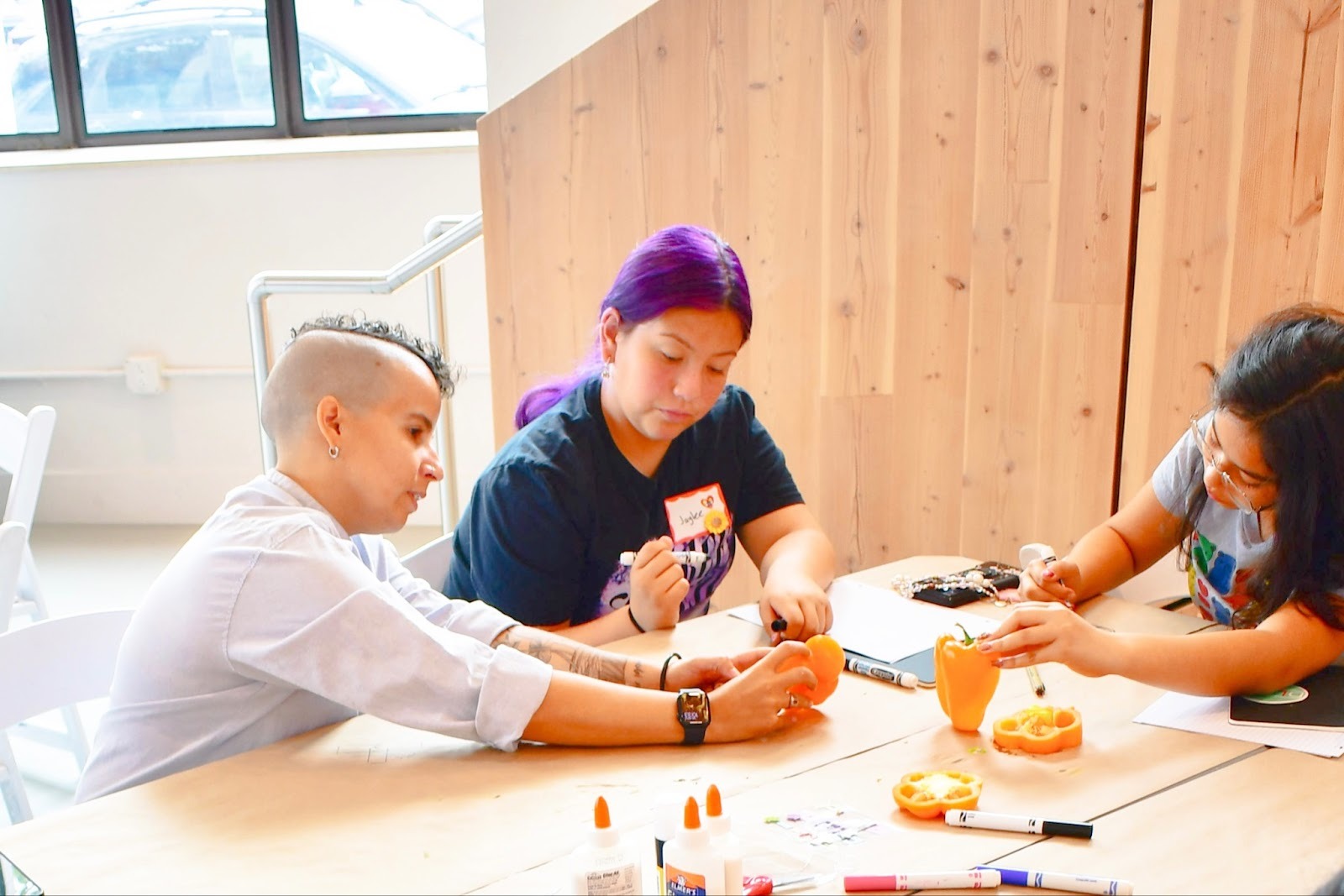

Through programs like ACE and Design Like a Girl, Practice studio members model how mentorship strengthens representation and long-term industry health.
Mentorship has always been part of architecture’s DNA, from formal relationships like apprenticeships to the informal learning that happens within studios. However, as our industry faces shifting demographics, evolving technologies, and new expectations of equity, mentorship has become more than tradition. It’s a tool for resilience that strengthens both people and our broader sector.

For new studio member Sarra Starbird, mentorship has become a way to give back what first opened her own path. “Last year, I became a mentor with ACE. I was in the program as a student, too,” she says. What began as a spark of curiosity in high school has turned into a decade-long relationship with the profession, a passion that now ripples on to her mentees.
“[ACE] is not just architecture,” she explains. “It’s architecture, construction, engineering—all the different pieces that come together to make a building or build a community.” Her students in the ACE Pasadena program spent their first semester visiting local offices, construction sites, and centers of innovation like NASA’s Jet Propulsion Laboratory and Caltech.
Through these experiences, the act of mentorship becomes an act of learning, too. “The program helps broaden my lens to the different industries that contribute to architecture,” she says.
“Students have an architect telling them one thing, then the structural engineer exposing them to something completely different. It really gives a sense of how people come together across different focuses to create something beautiful.”
In their second semester, Sarra’s students chose a Climate Resiliency Center as their capstone project, an idea born from their experience with Los Angeles’ wildfires in early 2025. “Being so close to the fires, we had a few students, unfortunately, lose their homes,” Sarra says. “They felt very anchored to the idea of a climate resiliency center.”
The choice was a lesson in what design education alone often can’t teach: how real events shape real needs. For Sarra, it underscored the value of place-based exposure. Mentorship becomes a way to connect practitioners to the urgency of the communities they serve. What began as a student exercise became a mirror for the profession itself, reminding mentors that the most relevant design ideas often come from those closest to the impact.
Her experience mirrors how mentorship doesn’t just develop the next generation but strengthens the current one. According to the AIA’s Guide for Equitable Practice on Mentorship and Sponsorship, firms that embed mentorship into daily operations see measurable improvements in collaboration, retention, and design quality.

By advocating for mentorship as a central practice both within our studio and the broader industry, we all gain exposure to new experiences and perspectives that strengthen our work.
For Project Captain Ismaelly Peña, ideas of access and representation are what draw them to mentorship. “Through literally all five years of my schooling at Woodbury, I received a scholarship from ACE,” they say. “Had I not known about that program, I likely wouldn’t have access to that knowledge base.”
Today, Ismaelly pays that forward through teaching and programs like Design Like a Girl, where they and other studio members including Diana Perez mentor young women in communities that often lack exposure to design. “I always tell my students, I don’t have money, so the only way I have to give back is through information, through knowledge.” For many of Ismaelly’s students, they add, the simple act of visibility matters most.

Increasing representation needs to be a focus of mentorship initiatives. A 2023 study by the National Council of Architectural Registration Boards found that nearly half of licensure candidates have a mentor, but those relationships were less effective and harder to find for diverse professionals. Those gaps often stem from a lack of connection.
“Having someone that looks like you, that has had perhaps experiences that are similar to that of your family — a trajectory that feels familiar — means students are able to confide and tell me their personal stories," Ismaelly says.
Programs like Design Like a Girl aim to close that gap early. “There’s a gender factor, and the organization is also trying to diversify which schools they outreach to—that’s their intent,” Ismaelly says. By reaching students long before college, these efforts expand who even sees architecture as a possibility. “The impact you have on a person that young is tremendous. They remember those firsts.”
Mentorship is not only important in external programs but within the studio itself. The kind of cross-disciplinary exposure that shaped Sarra’s students through ACE continues here across planning, design, and implementation every day. For Associate Director of Construction Phase Services César Arias, it lives in the dialogue between design and construction.
According to AIA’s Mentorship and Sponsorship Guide, informal learning accounts for more than 70% of professional development within architecture, yet it often goes unrecognized.
César often guides designers through site visits, helping them see how ideas translate once the drawings leave the page. That hands-on exposure reinforces the same interdisciplinary learning Sarra found so valuable in ACE, serving as a reminder that the best architecture emerges when disciplines learn from one another.
Studio members credit our culture for enabling their mentorship both within and beyond our studio. As Sarra says, “There’s a lot of emphasis on mentorship and community at Practice. That’s one of the things that really drew me to the firm.”
Ismaelly points to the learning culture within their own team, which is mostly women. “Within my immediate team, it’s been really nice and really unique,” they say. “It’s felt very supportive in that way.” Mentorship helps us reinforce a continual culture of shared learning.
According to NCARB and NOMA, more than half of architecture graduates do not complete licensure, citing a lack of guidance, access, or support networks.
Mentorship becomes the missing infrastructure between education and longevity, a piece that our studio emphasizes building. Mentoring creates more resilient practices and a profession that reflects the diversity of the communities it serves.
When Sarra’s ACE students in Pasadena chose to design a resiliency center, they were using the tools of our profession to imagine safety and belonging. That choice, Sarra says, “broadened the lens of what they can do, or aspire to.” The same can be said of mentorship itself.
As research from the AIA and the University of Washington on equitable practice emphasizes, mentoring and sponsorship “expand opportunity, build confidence, and accelerate innovation.” In a profession still contending with barriers of gender, race, and access, expanding mentorship becomes a professional imperative. It’s how we build an industry defined by shared learning and the belief that we all rise together.